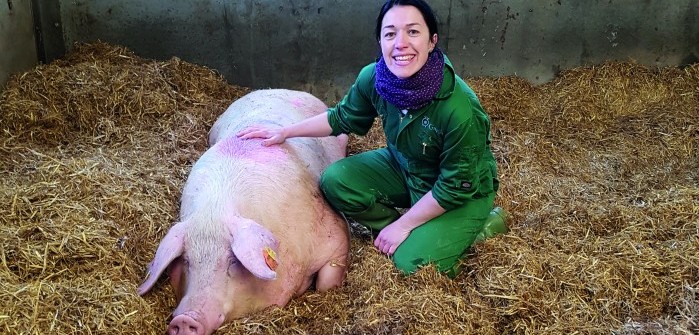In the latest issue of Pig World, Ciara O’Neil, part of the vet team at Garth Pig Practice, explains the role that vets can play in mitigating pigs’ carbon footprint
Pig medicine lectures at vet college, though few in number, were large in scale, the most memorable being titled ‘Pig medicine, the first 250,000 miles’.
It was an accumulation of the wisdom gathered by a pig vet in their first 10 years in practice and included such gems as ‘always park facing for home in case you need to make a quick exit’, and ‘if you hear hooves, think horses, not zebras’.
And while some of those gems stuck with me, it was the idea that I’d be travelling 250,000 miles in my first 10 years as a vet that really resonated. Even way back then, that felt like a lot of miles, a lot of fuel and a not insignificant footprint.
After the summer we’ve had (or not had), that footprint feels a lot more pressing. And as a profession, vets have moved forward – practices and individuals are making positive changes towards sustainability in their in-house operations (see the BVA’s #GreenTeamVet). However, while changes made at practice and at individual level are worthwhile and rewarding, the carbon footprint of the animals under our care cannot be underestimated.
And the ability of vets to mitigate these environmental impacts can also not be underestimated.
The average total carbon footprint of animals under the care of each pig vet is estimated at 27,000 tonnes per year (for context, the average UK citizen is responsible for about 15 tonnes of CO₂e per year).
27,000 tonnes per year – it’s a big number. But it doesn’t have to be that high – with every improvement in health made on a unit, the efficiency of the pigs improves and their need for resource decreases.
It’s well established that eradicating disease, implementing vaccination programmes and reinforcing biosecurity have a positive impact on pig health and welfare, and farm productivity, but the environmental impact of these measures should also be considered.
Improvements in health lead to improvements in feed efficiency, decreased resource use, decreased human health expenditure due to zoonoses and decreased use of antibiotics.
Studies in cattle in the UK have shown that a BVD control strategy, incorporating biosecurity, disease investigation and vaccination, would take around 200ktC0₂e off their tonnage. We don’t have the numbers for PRRSv, EP and flu, but their impact on the footprint of pig production will not be insignificant.
For a variety of reasons, now is the time to tighten up on biosecurity on your farm – keeping disease out is always cost, and carbon, effective.
It’s also a good time to start planning for next year – is there an opportunity to eradicate a costly disease from your unit?
Coming towards the end of the year is always a good time to sit down with your vet and really review the endemic disease on your farm – the most visible diseases aren’t always the ones that are necessarily costing you, your pigs and the planet the most.




